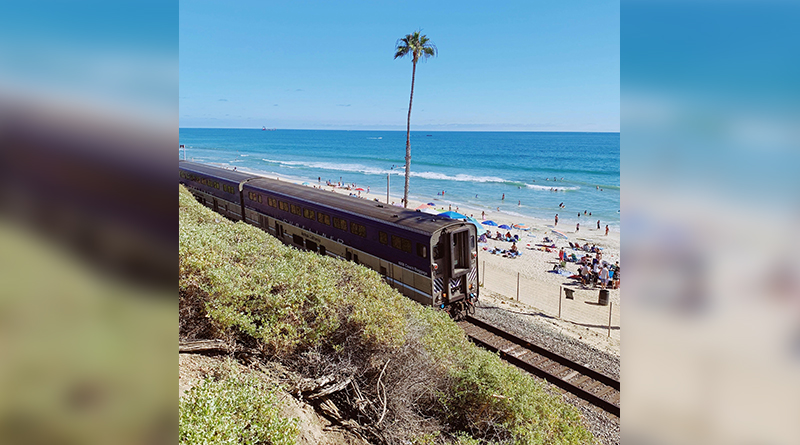California’s ocean salmon season is finally returning — at least in part. For the first time since 2022, recreational anglers will have the opportunity to target Chinook salmon off the California coast following a new recommendation by the Pacific Fishery Management Council (PFMC) issued April 15, 2025. But while the decision offers a glimmer of hope for the recreational fishing community, the commercial fleet faces another year of disappointment as the PFMC also recommended a continued closure of commercial salmon fishing for the third consecutive year.
The PFMC’s recommendation, which is expected to be enacted by the National Marine Fisheries Service in mid-May, reflects a cautious approach aimed at supporting the gradual recovery of salmon populations severely impacted by years of drought, wildfires, climate disruption, and shifting ocean conditions. According to the California Department of Fish and Wildlife (CDFW), the low ocean abundance forecasts and poor 2024 returns made it impossible to justify a full reopening.
“After years of full closure for salmon fishing, the opportunity for limited recreational salmon fishing brings hope. We know, however, that this news brings little relief for California’s commercial salmon fisheries,” said CDFW Director Charlton H. Bonham. “Salmon populations are still recovering from severe drought and other climate challenges.”
Beginning June 7, 2025, recreational anglers can fish ocean waters between the Oregon/California state line and the U.S./Mexico border during tightly controlled windows. The initial two-day opener on June 7 and 8 carries a harvest cap of 7,000 Chinook salmon. If the quota isn’t met, the fishery will reopen July 5 and 6, with additional dates possible through August. Meanwhile, anglers targeting waters between Point Reyes and Point Sur will have a four-day window from September 4-7 and a 7,500-fish fall harvest cap. If that limit is not reached, additional days in late September and October may be added.
In an effort to prevent overfishing, these short openers will be followed by closures to allow CDFW to monitor catch numbers and avoid exceeding harvest targets. Anglers will be limited to one daily bag limit on the water, with no more than two Chinook salmon per person. Coho salmon retention is prohibited.
The move offers some relief to charter operations and recreational anglers, especially those who rely on salmon season to kick off their summer fishing. “California’s recreational anglers welcome the opportunity to get back on the water,” said PFMC member Marc Gorelnik. “The number of open days is exceedingly limited in order to achieve negligible impacts on Klamath River Chinook salmon.”
Still, for California’s commercial salmon fleet, the continued closure is a significant economic blow. George Bradshaw, president of the Pacific Coast Federation of Fishermen’s Associations, emphasized the tough road ahead: “We were optimistic about a return to salmon fishing for California’s fleet, but the reality is, the low abundance and return estimates will not provide the economic impact we need. The risk of fishing this depleted population is simply not worth the reward.”
The closures follow several years of devastating environmental conditions for salmon. Multi-year droughts have dried up spawning grounds, wildfires have choked river systems with ash and debris, harmful algal blooms have altered marine food webs, and ocean temperatures have shifted forage patterns and created thiamine deficiencies in juvenile fish. These stressors have taken a cumulative toll, making conservation-driven decisions necessary.
The state has responded with urgency. In March 2025, CDFW released a progress report on the California Salmon Strategy for a Hotter, Drier Future. Originally launched in January 2024, the strategy outlines 71 action items to improve habitat, water quality, and survival rates for salmon across the state. As of March, 70 percent of those items are already underway, and 26 percent are complete.
The limited 2025 salmon season will serve as a test of whether the population can begin to recover under strict oversight. The California Fish and Game Commission is also expected to weigh in on inland salmon fisheries at its April and May meetings.
California anglers are encouraged to check the latest regulations and season updates via CDFW’s Ocean Salmon web page or by calling the CDFW Ocean Salmon Regulations Hotline at (707) 576-3429. In-season changes will also be communicated through the National Marine Fisheries Service hotline at (800) 662-9825.
As California cautiously opens the door to salmon season, this year’s limited recreational opportunities may offer more than just a chance at a catch — they represent a critical step toward the species’ recovery and the revival of a fishery deeply woven into the state’s cultural, economic, and ecological fabric.





